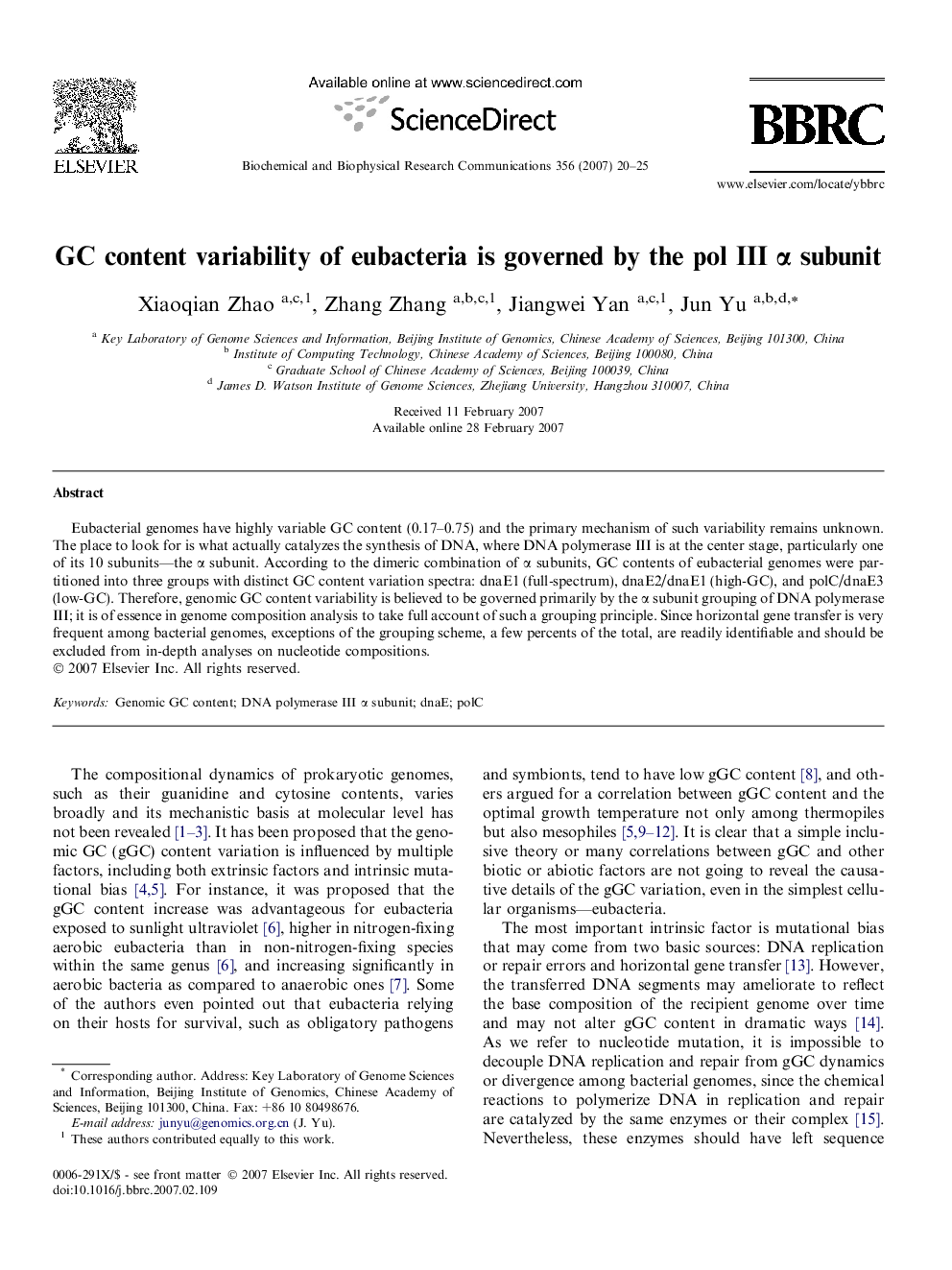| Article ID | Journal | Published Year | Pages | File Type |
|---|---|---|---|---|
| 1938619 | Biochemical and Biophysical Research Communications | 2007 | 6 Pages |
Eubacterial genomes have highly variable GC content (0.17–0.75) and the primary mechanism of such variability remains unknown. The place to look for is what actually catalyzes the synthesis of DNA, where DNA polymerase III is at the center stage, particularly one of its 10 subunits—the α subunit. According to the dimeric combination of α subunits, GC contents of eubacterial genomes were partitioned into three groups with distinct GC content variation spectra: dnaE1 (full-spectrum), dnaE2/dnaE1 (high-GC), and polC/dnaE3 (low-GC). Therefore, genomic GC content variability is believed to be governed primarily by the α subunit grouping of DNA polymerase III; it is of essence in genome composition analysis to take full account of such a grouping principle. Since horizontal gene transfer is very frequent among bacterial genomes, exceptions of the grouping scheme, a few percents of the total, are readily identifiable and should be excluded from in-depth analyses on nucleotide compositions.
